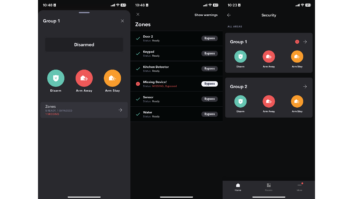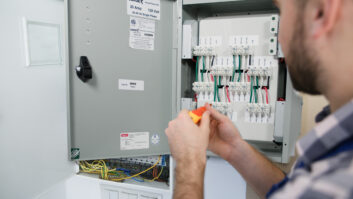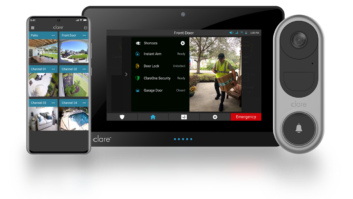When Technology is the Hidden Member of the Theater Design Team

Sam Cavitt (samcavittmedesign.tv) is president of Paradise Theater in Kihei, Hawaii, and Carlsbad, California.
We can discuss acoustical and system planning and design, ergonomic considerations, and aesthetics but, in the end, theater designers are dependant and, in fact, driven by the products that are available to and demanded by our clientele.
In recognition of the importance of these hidden design team members and their creations, Residential Systems is holding the seventh annual Resi Awards competition, results of which are being published in this issue. We thought it timely to touch on a few of the finalists’ products that are specifically oriented to home theater and discuss the benefits, challenges, and even some suggestions regarding these products and product categories.
Lighting Control Keypads
There are two finalists in the lighting control category and both offer some useful features from a theater design perspective. Of course, integrated lighting design and control are an essential element for quality theater design. The finalists in this year’s competition offer elegant keypad design choices to coordinate with virtually any décor and both offer some interesting features having to do with visibility. The keypads offer backlit buttons, which enable visibility in all lighting conditions. Theaters are, by necessity, dark. One product–the LiteTouch Circa keypad–offers adjustable light levels and LED color selections, enabling appropriate (low enough to prevent distraction, bright enough to be visible) light levels and color to be selected. The Vantage Keypad Collection offers automatic adjustment of LED backlights to ambient light levels. What isn’t clear is if these automatic levels can be customized or programmed to work with the various scenarios found in a theater environment. Now that would be very nice.
Application Mounts
This next product is related somewhat to the first. TRUFIG has created a system of absolutely integrated flush mountings for many of the essential technology devices found in home theaters as well as most residential spaces. Touchscreens, keypads, receptacles, and other wall-mounted devices now can be integrated virtually seamlessly into wallboard, stone, and wood surfaces. It may sound petty but the ability to mount convenience receptacles on theater baseboard that are truly flush and match the wood, while maintaining the fully decoupled isolation acoustics we strive for is exciting to me.

A lot of hidden technology went into this Paradise Theater design partnership with Ty Meyer’s Audio Video Design integration firm in Mission Viejo, California.
Hiding Speakers
While members of the audio-video industry may find the industrial design of on-wall, in-room surround speakers and subwoofers pleasing, the design community thinks that these should not be seen at all. This year two Resi Awards finalists addressed these concerns. The BG Radia SS- 303 is a full-frequency surround speaker designed to integrate into wall construction, acoustical substrate construction, columns, and other typical theater interior details. We continue to see development in this area and are pleased to see manufacturers building products based on engineering and functionality rather than cabinet designs that we just have to cleverly hide. In the world of bass, Leon’s Aaros A10-UT offers a very thin solution for integration into room construction. If the product delivers on its promise of very low bass extension, the A10-UT provides a very nice way to deliver what our acoustical models demand: precise (and typically inconvenient) location of multiple subwoofers to address the modal characteristics of rooms.
Video Developments
The last two finalists I’d like to point out are LED-driven projection systems. The attributes that make LED-driven projection so attractive to theater designers are reduced heat output, reduced noise propagation (as a result of #1, and improved black levels. The problem not yet solved is light output. Both SIM2 and Digital Projections are finalists in this category and both offer worthy developments. I applaud the continued development in this area and encourage the work to create video projectors with brighter LED engines so that we can specify these units for our largescreen projects. Currently the light levels will support up to about 100- inch diagonal screens.
Congratulations to this year’s finalists for being part of the solution.







